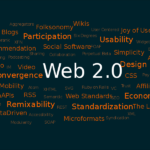 Facebook’s New Terms Of Service: “We Can Do Anything We Want With Your Content. Forever.” This month Facebook revised its Terms of Use, a document it is legally permitted to update at any time without informing users. Users demonstrate tacit acceptance of the Terms by continuous use of the site.
Facebook’s New Terms Of Service: “We Can Do Anything We Want With Your Content. Forever.” This month Facebook revised its Terms of Use, a document it is legally permitted to update at any time without informing users. Users demonstrate tacit acceptance of the Terms by continuous use of the site.
The revision grants Facebook complete, perpetual ownership of content uploaded or added to Facebook — including the rights to sublicense said content:
You hereby grant Facebook an irrevocable, perpetual, non-exclusive, transferable, fully paid, worldwide license (with the right to sublicense) to (a) use, copy, publish, stream, store, retain, publicly perform or display, transmit, scan, reformat, modify, edit, frame, translate, excerpt, adapt, create derivative works and distribute (through multiple tiers), any User Content you (i) Post on or in connection with the Facebook Service or the promotion thereof subject only to your privacy settings or (ii) enable a user to Post, including by offering a Share Link on your website and (b) to use your name, likeness and image for any purpose, including commercial or advertising, each of (a) and (b) on or in connection with the Facebook Service or the promotion thereof. You represent and warrant that you have all rights and permissions to grant the foregoing licenses.
The sublicense clause is of particular interest in a media landscape where users habitually share significant amounts of personal data on public websites — including Facebook, MySpace, flickr and blog platforms like Xanga or Blogger. Two years ago, a Dallas family sued Virgin Mobile/Australia for appropriating an image of their teenage daughter — which Virgin found on Facebook — for use in billboards and web ads.
Facebook’s Terms of Use previously stated that material uploaded onto the site falls under the license of the company. Prior to the February 4 update, however, users that removed their content from Facebook legally forfeited its license to their material, though the socnet reserved the right to maintain archives.
Prior to February 4, the Terms of Use read:
If you choose to remove your User Content, the license granted above will automatically expire, however you acknowledge that the Company may retain archived copies of your User Content.
The dramatic about-face peaked the interest of the The Consumerist, which today brought the news to the attention of an increasingly concerned Twittersphere. Throughout the morning hours, users repeatedly re-Tweeted the Consumerist’s spin on the news: Facebook’s New Terms Of Service: “We Can Do Anything We Want With Your Content. Forever.”



